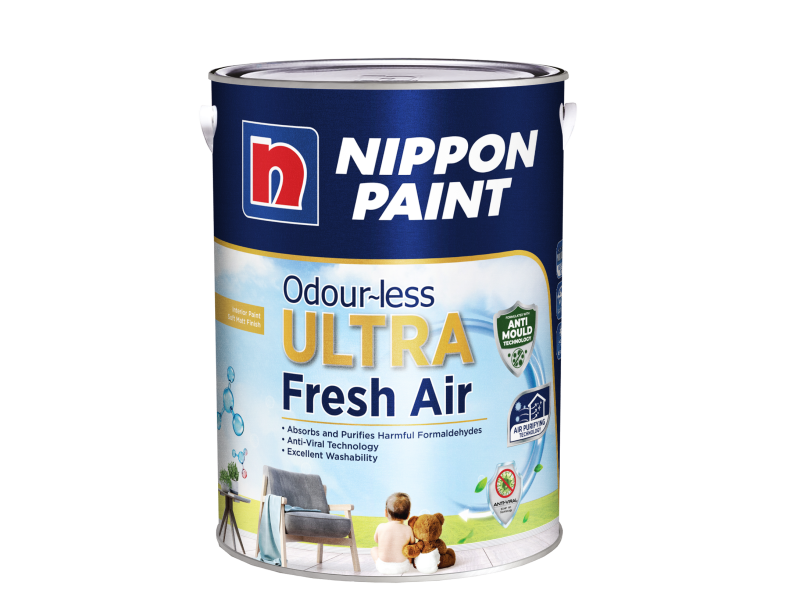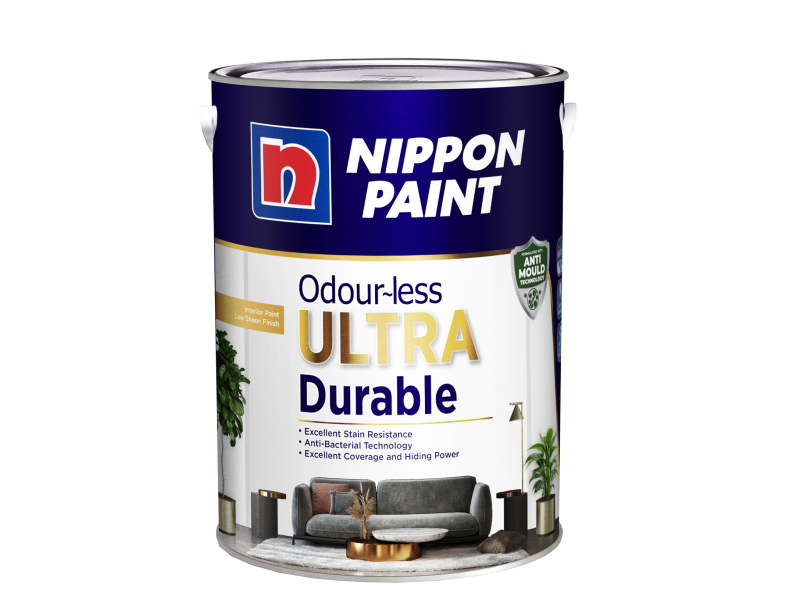
From the familiar scent of fresh paint to the excitement of unboxing new furniture, many of us associate these moments with a sense of renewal in our homes. While the smell of new paint may dissipate over time, the emission of potentially harmful gases like formaldehyde can continue to off-gas for years, raising important health concerns.
According to a 2024 article by CNA, treatment firms have reported a staggering spike in formaldehyde removal cases. One firm even reported a rise of up to 70%, averaging about 80 cases each month.
As more homeowners become increasingly aware of the health risks associated with formaldehyde, understanding its sources and effective removal methods is more crucial than ever. In this article, we’ll delve into the nature of formaldehyde, its sources and how it can be removed from your home.
What is Formaldehyde?
Formaldehyde is a type of Volatile Organic Compound (VOC). It’s a colourless gas known for its flammability at room temperature. This gas has a strong, pungent odour that can irritate the eyes, nose and lungs when present at high concentrations.
Often associated with new furniture or fresh paint, the sharp scent of formaldehyde is unmistakable. However, due to its extremely small size (500 times smaller than 0.1 microns), formaldehyde is difficult to detect and can become trapped in a home for years if not properly treated.
Short-term exposure to this gas may lead to symptoms like coughing, wheezing and difficulty breathing. It can also trigger allergic reactions, skin rashes or asthma attacks in some individuals.
The long-term health risks are more severe. According to the International Agency for Research on Cancer (IARC), formaldehyde is classified as a human carcinogen. It’s linked to an increased risk of certain types of cancer, especially nasopharyngeal cancer and leukaemia. Chronic exposure can also contribute to respiratory problems, including chronic obstructive pulmonary disease (COPD) and diminished lung function.
Where is Formaldehyde Found in Homes?
Exposure to formaldehyde is a common problem faced by many BTO owners, especially after renovations. Formaldehyde can be emitted from various sources, including new wallpaper, furniture, flooring and building materials. Recognising where formaldehyde is typically found is essential for homeowners to minimise exposure and improve their indoor environment.
Wallpaper

Certain wallpapers and their adhesives may contain formaldehyde, which can be released into the air, especially without proper ventilation.
Furniture
Formaldehyde is commonly found in furniture, particularly those made from pressed wood products like plywood, particleboard and medium-density fiberboard (MDF). These materials often use formaldehyde-based adhesives that can release gas over time, contributing to indoor air pollution.
Flooring
Laminate flooring, vinyl and some engineered hardwood floors often use adhesives that can release formaldehyde, particularly during the initial months following installation.
Building Materials
Pressed wood products like insulation, wall panels and cabinets can off-gas formaldehyde, particularly in newly built homes or during renovation projects.
How to Remove Formaldehyde From Your Home
1. Use Paint with Formaldehyde Abatement Properties
One effective way to combat formaldehyde exposure is using paints with formaldehyde abatement properties, such as Nippon Paint’s Odour-Less Ultra Fresh Air and Odour-Less Ultra Durable. These premium paints provide a luxurious finish and play a significant role in purifying indoor air.
Odour-Less Ultra Fresh Air boasts a soft matte finish and ultra-low odour, making it a perfect choice for those sensitive to smells. It’s designed to enhance air quality by effectively absorbing and purifying harmful formaldehyde. This paint is also free from harmful substances, including lead, mercury and formaldehyde itself, ensuring a safe indoor environment for you and your loved ones.
On the other hand, Odour-Less Ultra Durable is an excellent option for high-traffic areas like the living room and kids’ rooms. This product excels in stain resistance and is resilient and easy to maintain. It shares many qualities with the Ultra Fresh Air version, including its formaldehyde-free and anti-bacterial properties.
The table below shows the key differences between Odour-Less Ultra Fresh Air and Odour-Less Ultra Durable.
 |
 |
|
| Odour-Less Ultra Fresh Air | Odour-Less Ultra Durable | |
| Finishing | Soft matte | Luxurious sheen |
| Odour | Ultra-low odour | Low odour |
| Stand-out feature | Effectively absorbs and purifies harmful formaldehyde | Excellent stain resistance |
| VOC emissions | Ultra-low VOC emission | Low VOC emission |
| Anti-viral properties | Anti-viral since it contains silver ion in the formulation | Anti-bacterial properties |
2. Use a Dehumidifier
Formaldehyde emissions typically increase with higher humidity and temperature. As such, it’s important to keep indoor humidity levels low by using a dehumidifier. Aside from managing humidity levels, some products can also absorb formaldehyde effectively, significantly reducing off-gassing.
3. Increase Ventilation
Increase ventilation within the room by opening windows and doors to promote better airflow. Additionally, utilising exhaust fans in kitchens and bathrooms can effectively help to dissipate indoor pollutants.
4. Invest in Air Purifiers

Consider investing in air purifiers that are equipped with HEPA or activated carbon filters to capture and absorb formaldehyde and other VOCs. However, do note that if these purifiers are not maintained properly, the filters can become saturated and less effective at removing formaldehyde from the air.
5. Include More Houseplants
Certain houseplants, such as the Spider Plant, Aloe Vera and Peace Lily, are known to absorb formaldehyde and other VOCs from the air. Adding these plants to your space after renovations can enhance both your home’s aesthetics and air quality.
Choose Nippon Paint’s Odour-Less Products for a Formaldehyde-Free Home
Selecting Nippon Paint’s Odour-Less products means opting for a safer, healthier indoor environment. These paints are formulated to resist mould and fungus, ensuring your home remains clean and safe for you and your loved ones.
With low VOC emissions, they contribute to improved air quality, making them ideal for both new constructions and renovations. Additionally, Nippon Paint’s Odour-Less products are splatter-resistant and provide excellent coverage and hiding power, ensuring an efficient painting process.
Certified under the Singapore Green Building Product Certification Scheme, these products reflect a commitment to environmental responsibility. By choosing Nippon Paint’s Odour-Less range, you can enhance the beauty of your spaces while taking significant steps to minimise harmful indoor pollutants.
FAQs About Formaldehyde
Is formaldehyde banned in Singapore?
Formaldehyde is not banned in Singapore, but its use is regulated to protect public health and indoor air quality. The government has established guidelines and safety standards to limit formaldehyde emissions in specific products. This includes building materials, such as paint, and various household items.
Is there formaldehyde in paint used in Singapore?
Starting January 1, 2026, Singapore will prohibit the addition of formaldehyde in interior paints to protect public health and improve indoor air quality. Contact with or inhaling formaldehyde can cause respiratory issues and other health problems. Under the new regulations, interior paints must contain no more than 0.01% formaldehyde by weight. Manufacturers will need to submit test reports from accredited laboratories to ensure compliance.
To choose safer options, look for paints labelled as low-VOC (volatile organic compounds) or no added formaldehyde, and check for certifications like Green Label or Singapore’s Environmental Sustainability Certification to ensure lower emissions and safer indoor air quality.
Nippon Paint’s Odour-Less range is a great choice as they’re formulated to resist mould and fungus while ensuring low VOC emissions. Certified under the Singapore Green Building Product Certification Scheme, these paints enhance the beauty of your spaces while minimising harmful indoor pollutants, creating a more comfortable living environment for you and your family.
What is formaldehyde poisoning?
Formaldehyde poisoning occurs when an individual is exposed to high levels of formaldehyde, leading to toxic effects on the body. This can happen through inhalation of the gas, skin contact, or ingestion of products containing formaldehyde.
The severity of formaldehyde poisoning depends on the concentration of exposure and the duration of contact. Symptoms may range from mild irritation to more severe reactions, including headaches, nausea and dizziness. In extreme cases, high levels of exposure can lead to life-threatening conditions.
What are the symptoms of formaldehyde poisoning?
Symptoms of formaldehyde poisoning can include:
- Irritation of the eyes, nose, and throat
- Coughing and wheezing
- Skin rashes
- Headaches
- Nausea
- Respiratory distress
- Allergic reactions
Long-term exposure may also lead to more serious health issues, including chronic respiratory problems and an increased risk of cancer.
15 Captivating Two-tone Paint Ideas To Create An Instaworthy Backdrop At Home
